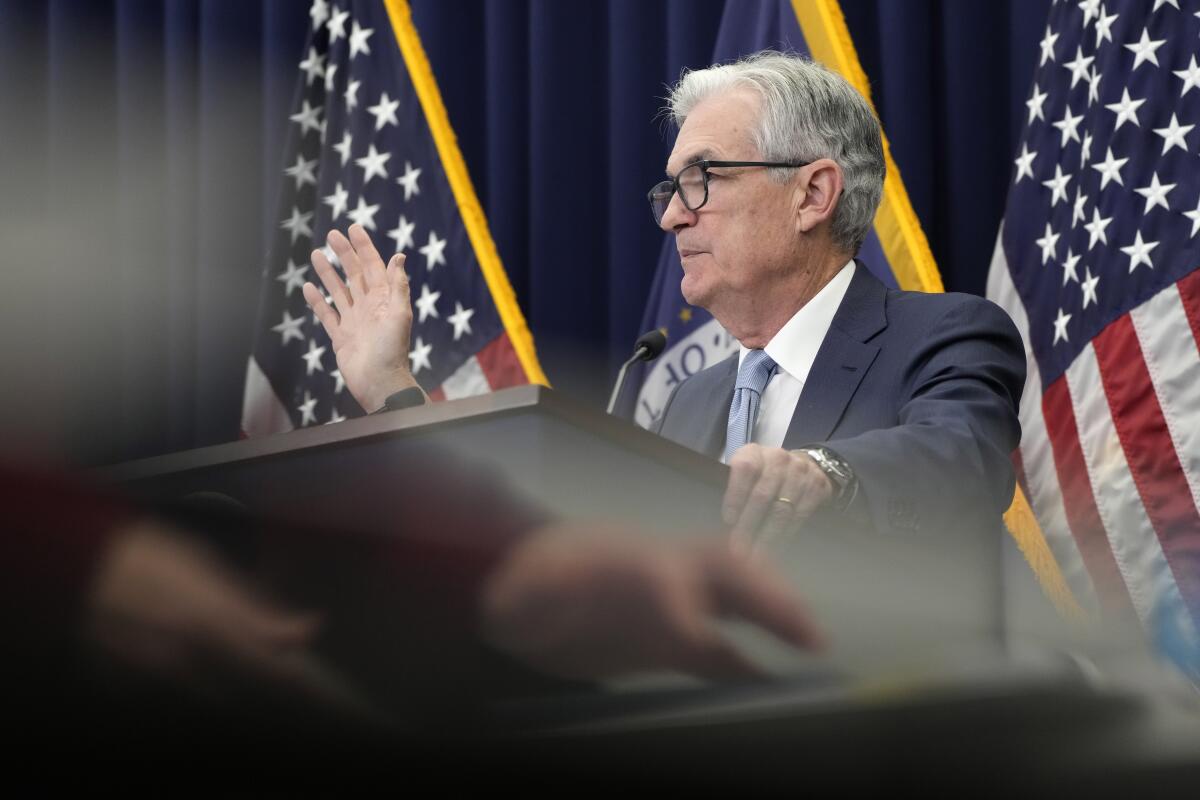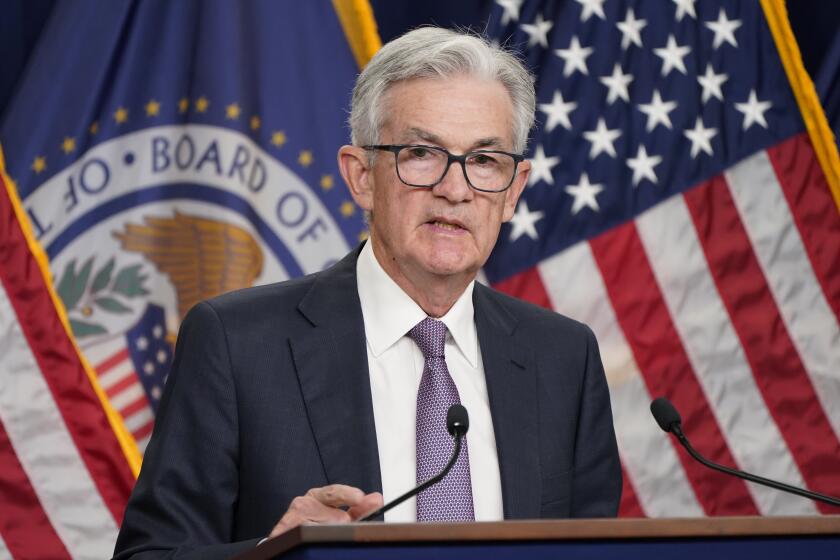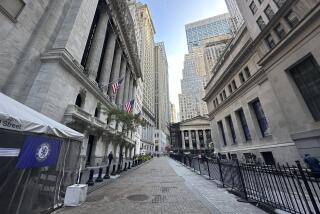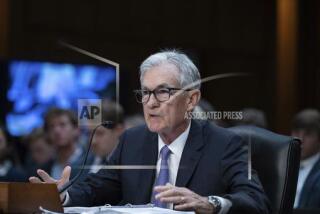Fed lifts rate by quarter point, signaling more hikes ahead

The Federal Reserve extended its fight against high inflation on Wednesday by raising its key interest rate by a quarter of a point, its eighth increase since March. The Fed signaled that even though inflation is easing, it remains high enough to require further rate hikes.
At the same time, Chair Jerome H. Powell said at a news conference that the Fed recognizes that the pace of inflation has eased — a signal that it could be nearing the end of its rate increases. The stock and bond markets rallied during his news conference, suggesting that they expect a forthcoming pause in the Fed’s credit-tightening.
The Fed’s latest move, though smaller than its previous hike — and even larger rate increases before that — will probably further raise the costs of many consumer and business loans and the risk of a recession.
In a statement, Fed officials repeated language they have used since March that says, “ongoing increases in the [interest rate] target range will be appropriate.” That is widely interpreted to mean they will raise their benchmark rate again when they next meet in March and perhaps in May as well.
The Fed’s rate increase was announced one day after the government reported that pay and benefits for U.S. workers grew more slowly in the final three months of 2022, the third straight quarterly slowdown. That report could help reassure the Fed that wage gains won’t fuel higher inflation.
Though the Fed kept language in its statement Wednesday suggesting that more rate increases are in store, it did note for the first time that price pressures are cooling. The statement also hinted that it will probably stick with modest quarter-point hikes in coming months and is considering when to eventually suspend them.
Powell emphasized that the Fed’s inflation fight is far from over.
“We will need substantially more evidence to be confident that inflation is on a long, sustained downward path,” he said at his news conference. “It would be very premature to declare victory or think that we really got this. We have to complete the job.”
Speculation is widespread, though, among Wall Street investors and many economists that with inflation continuing to cool, the Fed will soon decide to halt its aggressive drive to tighten credit. When they last met in December, the Fed’s policymakers forecast that they would eventually raise their benchmark rate to a level that would require two additional quarter-point hikes.
If you recently made that decision or are currently thinking it over, the Times would like to speak with you.
Yet Wall Street investors have priced in only one more increase. Collectively, in fact, they expect the Fed to reverse course and actually cut rates by the end of this year. That optimism has helped drive stock prices up and bond yields down, easing credit and pushing in the opposite direction that the Fed would prefer.
The divide between the Fed and financial markets is important because rate increases need to work through markets to affect the economy. The Fed directly controls its key short-term rate. But it has only indirect control over borrowing rates that people and businesses actually pay — for mortgages, corporate bonds, auto loans and many other types of borrowing.
The consequences can be seen in housing. The average fixed rate on a 30-year mortgage soared after the Fed first began raising rates. Eventually, it topped 7%, more than twice where it had stood before the increases began.
Yet since the fall, the average mortgage rate has eased to 6.13%, the lowest level since September. And although home sales fell further in December, a measure of signed contracts to buy homes actually rose. That suggested that lower rates might be drawing some home buyers back to the market.
At his news conference Wednesday, Powell brushed aside the concern that the Fed will end up tightening credit too much and trigger a recession.
“I still think there is a path to getting inflation down to 2%,” the Fed’s target level, “without a significant economic decline or significant increase in unemployment,” he said.
Over the last several months, Fed officials have reduced the size of their rate increases, from four unusually large three-quarter-point hikes in a row last year to a half-point increase in December to Wednesday’s quarter-point hike.
Since the Fed met earlier this month, economic data have shown moderate growth with some signs of slowing inflation amid a still strong labor market.
The more gradual pace is intended to help the Fed navigate what will be a high-risk series of decisions this year. The central bank’s latest move put its benchmark rate in a range of 4.5% to 4.75%, its highest level in about 15 years.
The slowdown in inflation suggests that its rate increases have started to achieve their goal. But measures of inflation are still far above the central bank’s 2% target. The risk is that with some sectors of the economy weakening, ever-higher borrowing costs could tip the economy into a downturn later this year.
Retail sales, for example, have fallen for two straight months, suggesting that consumers are becoming more cautious about spending. Manufacturing output has fallen for two months. On the other hand, the nation’s job market — the most important pillar of the economy — remains strong, with the unemployment rate at a 53-year low of 3.5%.
The Fed’s latest policy statement indicated that the central bank no longer regards COVID-19 as a driver of higher prices. It removed from its statement a reference to the pandemic as a cause of supply shocks that have heightened inflation.
Over the last year, with businesses sharply raising pay to try to attract and keep enough workers, Powell has expressed concern that wage growth in the labor-intensive service sector would keep inflation too high. Businesses typically pass their increased labor costs on to their customers by charging higher prices, thereby perpetuating inflation pressures.
But recent gauges show that wage growth is slowing. And overall inflation eased to 6.5% in December from a year earlier, down from a four-decade peak of 9.1% in June. The decline has been driven in part by cheaper gas, which has tumbled to $3.50 a gallon, on average, nationwide, from $5 in June.
Supply chain backups have also largely been cleared, leading to a drop in prices for manufactured goods. Used-car prices, having skyrocketed in the pandemic amid an auto shortage, have now fallen for several months.
Other major central banks are also fighting high inflation with rate increases. The European Central Bank is expected to raise its benchmark rate by a half-point when it meets Thursday. Inflation in Europe, though slowing, remains high, at 8.5% in January compared with a year earlier.
The Bank of England is forecast to lift its rate at a meeting Thursday as well. Inflation has reached 10.5% in the United Kingdom. The International Monetary Fund has forecast that the U.K. economy will probably enter recession this year.
More to Read
Inside the business of entertainment
The Wide Shot brings you news, analysis and insights on everything from streaming wars to production — and what it all means for the future.
You may occasionally receive promotional content from the Los Angeles Times.












